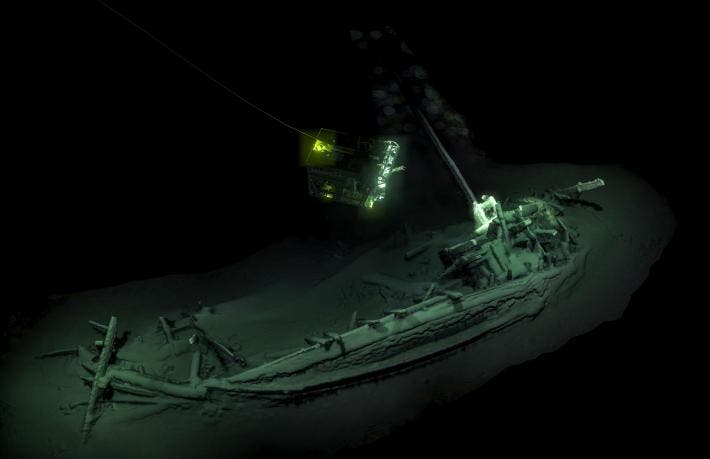This old sunken merchant ship lies just off the coast of Bulgaria and is still in remarkable shape.

Around the year 400BC, some traders in Greek had a horrible day. For reasons that remain unknown, their ship sank. Well, archaeologists only suspect that it was a Greek merchant ship, but it’s clear that it did sank — and was amazingly well-preserved, one mile beneath the surface, its mast, rudders, and rowing benches still intact and in place.
“A ship surviving intact from the classical world, lying in over 2km of water, is something I would never have believed possible,” said Professor Jon Adams, the principal investigator with the Black Sea Maritime ArchaeologyProject (MAP), the team that made the find. “This will change our understanding of shipbuilding and seafaring in the ancient world.”
The 23-meter (75 feet) boat was discovered by a Remote Operated Vehicle (ROV) operated by the Black Sea Maritime Archaeology Project (MAP), which has discovered more than 60 historic shipwrecks during a three-year survey of the Black Sea, according to The Guardian.
The findings varied from a “17th-century Cossack raiding fleet, through Roman trading vessels, complete with amphorae, to a complete ship from the classical period” — the latter of which is presented here.
Aside from its excellently-kept wooden structure, the ROV also discovered typical Greek pottery, and retrieved a piece of the wreck and brought it to the surface for dating (it was dated to 2,400 years ago). The results will be presented at the Black Sea MAP conference at the Wellcome Collection in London later this week.
The pottery vase depicts a legendary scene: the hero Odysseus strapped to the mast of his ship, as he sailed past three mythical mermaids whose irresistible tune was thought to drive sailors to their deaths. Odysseus wanted to hear the tune, while still being immune to their trickery.
While older ships have been found on land, it’s highly uncommon for submerged ships to escape decay. However, it’s no coincidence that the ship was so well-preserved — in fact, it’s got everything to do with the unusual physical and chemical environment of the Black Sea.
The Black Sea is what’s called a meromictic basin — it has layers that don’t intermix. Simply put, the deep waters do not mix with the upper layers of water that receive oxygen from the atmosphere. As a result, over 90% of the deeper Black Sea volume is anoxic — it almost completely lacks oxygen. It’s this anoxic layer that helped preserve the ship — and many others. These unique conditions have helped many ships sunken in the Black Sea remain in excellent shape. However, MAP says they need additional funding in order to return to the area.
They are interested not only in finding sunken ships but also in using the information to study technology and trade in the area, as well as sea movement and circulation.


